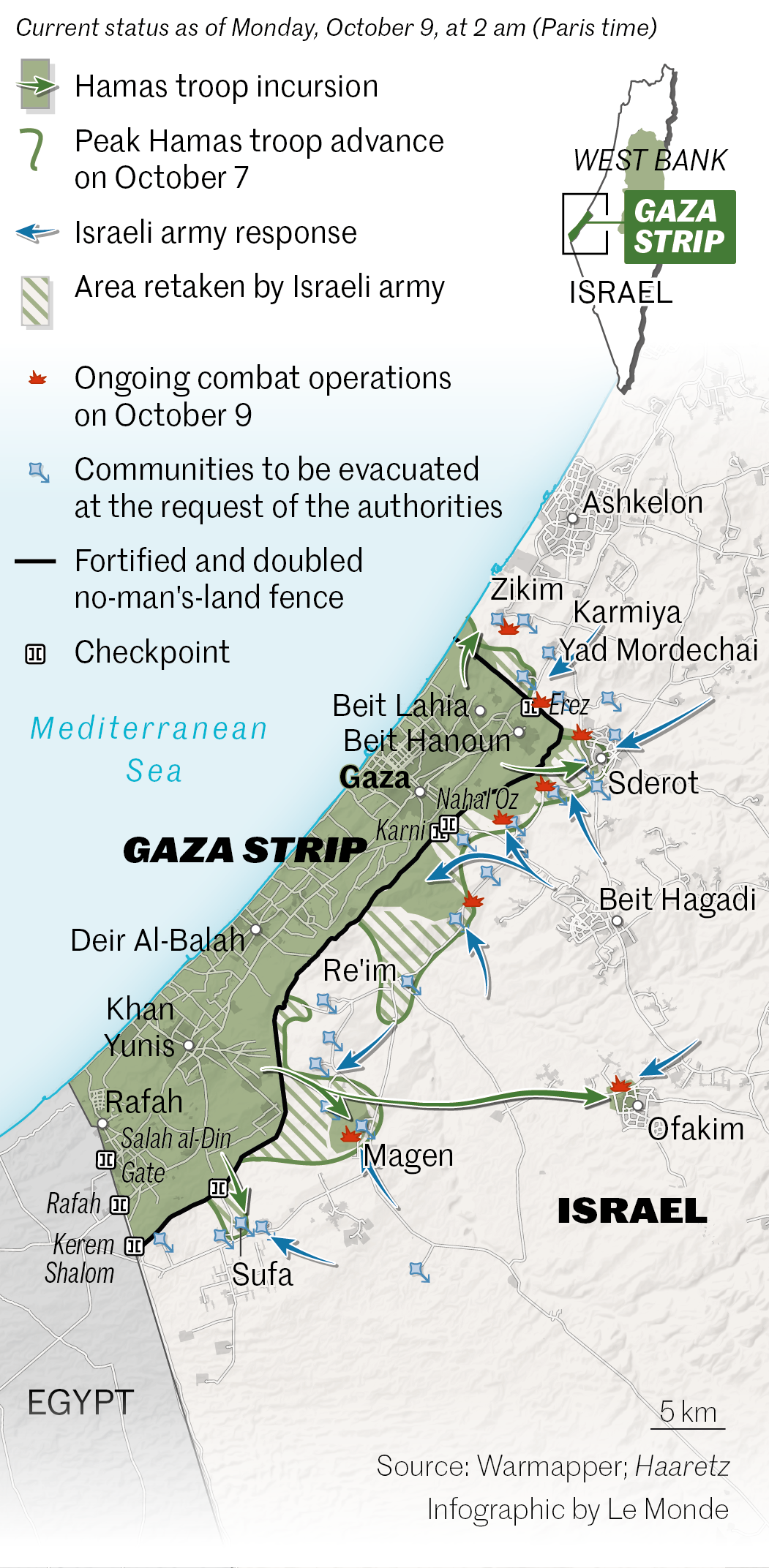


How did it happen that the Israeli army's defenses collapsed like a house of cards in the face of the Hamas assault on Saturday, October 7? This is the question that will occupy Israel for generations. It will certainly be the subject of a commission of inquiry, which will weigh up political and military responsibilities after the war.
But it is already haunting former Israeli officers, who, in solidarity with their comrades in active service and with the government, are for the most part keeping silent, or speaking only on condition of anonymity.
One thing is clear: Intelligence is to blame, more than any other branch. Such an attack must have been planned at length, but military intelligence and the Shin Bet (Israel's internal security agency) either failed to detect the warning signs or misinterpreted them.
A former top-level security official told Le Monde that Israel has long been able to observe Hamas fighters training with the weapons they deployed on Saturday and rehearsing such maneuvers. "They were visible, we knew what they were doing. We had already observed every component of their operation. Including their use of the drones with which they bombed the security fence [which encloses the Gaza Strip], in order to blind us when they crossed it. But these were small, limited operations."
And then Hamas rolled it out on a massive scale. According to the army, its commandos crossed the security fence at 29 points on Saturday. A large proportion of these men passed through the Erez border crossing for civilians, which they had taken control of. The fence's network of sensors and surveillance cameras, laid out in a series of lines, either failed to fulfill its function or was overwhelmed. The long-distance observation unit processing the data seemed to have been at least partly blinded.
"Hamas has learned its lesson from the last war in 2014," explained Yossi Kuperwasser, a former director general of the Israel Ministry of Strategic Affairs. "It saw that its rockets, naval forces and attack drones were no longer getting it very far. It realized that the wall was blocking its tunnels. It changed its approach by taking down the border barrier and launching as many attacks as possible simultaneously, dispersing them to outflank us."

The rocket fire served as a diversion for the commandos. More than 4,000 were fired in three days, compared with 4,500 during the last war in May 2021, which had lasted 11 days. The dispatch of a naval unit and microlight planes added to the confusion. The Hamas propaganda arms made good use of this, boasting of a genuine joint operation.
You have 68.15% of this article left to read. The rest is for subscribers only.
